The Benefits of Group Therapy for Autistic Individuals
Enhancing Lives Through Group Therapy: Evidence and Insights for Autism Support

Understanding the Role and Impact of Group Therapy in Autism
Group therapy has become an increasingly recognized approach for supporting autistic individuals, focusing on social skills, emotional regulation, and quality of life improvements. This article explores the benefits of group therapy for autistic individuals, highlighting evidence-based interventions such as Cognitive Behavioral Therapy (CBT), Applied Behavior Analysis (ABA), and social skills training. We examine the effectiveness of these therapies, their delivery, and how group settings uniquely support autistic participants on their developmental and social journeys.
Cognitive Behavioral Therapy (CBT) in Group Settings for Autistic Adults
How is CBT structured for autistic adults in group therapy?
CBT group therapy for autistic adults is typically organized into structured sessions spanning about 36 weeks. Led by trained therapists, these group sessions focus on creating a consistent and supportive environment through clear schedules and well-planned activities. The therapy integrates psycho-education to increase awareness about autism, alongside social skills training that helps participants navigate social situations more effectively.
What key CBT components are tailored for autism?
CBT for autistic adults incorporates specialized elements such as goal-setting to encourage personal achievement, role-playing for practicing social scenarios, and exposure exercises aimed at reducing anxiety related to specific fears or social challenges. Behavioral analysis allows participants to reflect on and change unhelpful patterns, while the therapy emphasizes understanding autism-related difficulties to foster better coping mechanisms.
What benefits are observed in adult participants?
Adults engaging in CBT group sessions report improvements in their quality of life, facilitated by increased self-acceptance and enhanced social understanding. The structured group setting promotes mutual support, allowing participants to share experiences and gain insight into their challenges. Subjective feedback highlights better recognition of personal difficulties and increased ability to express needs, contributing to better daily functioning and social integration.
How do dropout rates and acceptability compare?
CBT group therapy demonstrates a lower dropout rate compared to alternatives like recreational activities, suggesting it is more acceptable and feasible for autistic adults. This retention indicates that participants find CBT engaging and valuable, potentially due to its tailored focus on their specific difficulties.
What subjective improvements do participants experience after CBT?
Participants often describe a deeper understanding of their autism-related challenges and feel more confident in communicating their needs post-CBT. This increased self-awareness and communication skill enhancement can lead to improved interactions in everyday life, supporting social engagement and emotional well-being among adults with ASD.
Improvements in Quality of Life Through Group CBT and Recreational Activities
Do group therapies improve quality of life in autistic adults?
Both group cognitive behavioral therapy (CBT) and recreational activities have been demonstrated to enhance the quality of life in adults with autism spectrum disorder (ASD). Studies reveal measurable increases in quality of life scores following treatment, with both interventions showing medium effect sizes.
Quality of life improvements
The improvements stem from structured 36-week group sessions tailored specifically for adults with ASD and normal intelligence. These sessions, led by trained therapists, emphasize structured activities, psycho-education, and social skills training, which contribute to participants feeling more understood and supported.
Comparison with recreational activities
Interestingly, group CBT and recreational activities are found to be equally effective in boosting quality of life measures. Both interventions provide benefits through structured group settings that promote social interaction, sharing of experiences, and insight into personal challenges. This shared group environment may foster increased self-acceptance, helping adults with ASD cope better.
Effect sizes and therapy impact
The interventions demonstrated a medium effect size in improving quality of life, indicating a meaningful positive impact. However, these results did not extend to psychiatric symptoms, self-esteem, or sense of coherence, which remained largely unchanged after treatment.
Limitations on psychiatric symptom improvements
While the therapies improved quality of life, neither group CBT nor recreational activities significantly alleviated psychiatric symptoms such as anxiety or depression. This suggests that while group interventions can enhance general well-being and social functioning, they may need to be combined with other treatments to fully address mental health concerns.
These findings highlight the value of group-based approaches for enhancing life quality in adults with ASD, emphasizing social support and structured engagement as powerful contributors to well-being.
Group-Based Social Skills Interventions (GSSIs) for Youth with Autism
What Are Group-Based Social Skills Interventions (GSSIs) and How Are They Used?
GSSIs are structured group therapies aimed at enhancing social competence in youth with autism spectrum disorder (ASD). They often include components like teaching conversational skills, recognizing social cues, and practicing social interactions in a supportive group environment. These interventions are widely used because social difficulties are a central challenge for many autistic individuals.
How Effective Are GSSIs for Autistic Youth?
Meta-analyses of 19 randomized controlled trials reveal that GSSIs produce a medium overall effect size (g=0.51, p<0.001) in improving social skills. This demonstrates a moderate but meaningful benefit for youth participating in these programs.
How Do Effect Sizes Vary by Source of Reporting?
Different reporters observe varying levels of improvement:
- Self-reports: Large effect size (g=0.92), indicating that participants perceive a substantial gain, mainly in their understanding of social skills.
- Task-based measures: Medium effect size (g=0.58), reflecting some improvement on structured assessments.
- Parent-reports: Small effect size (g=0.47).
- Observer-reports: Small effect size (g=0.40).
- Teacher-reports: No significant effect, possibly due to restricted opportunities to observe social interactions.
This suggests that while youth feel they learn a lot, observable changes in natural social behavior are more modest.
Is Improvement More About Social Knowledge or Social Performance?
The large improvements seen in self-reports are primarily driven by social knowledge gains—participants learn about social rules and behaviors. However, this does not always translate into enacted social performances in daily life, as observed by parents and others.
What Are the Limitations, Including Possible Publication Bias?
While GSSIs show promise, there may be publication bias inflating positive outcomes. Additionally, characteristics such as age, gender, and cognitive ability do not seem to significantly influence effectiveness, suggesting broad applicability but also highlighting potential variability in individual responses.
These insights underscore the importance of focusing on both understanding and practicing social skills within GSSIs to better support autistic youth's real-life social integration.
Community Translation and Effectiveness of CBT for Anxiety in Autistic Youth
Can CBT for anxiety be effectively delivered in community settings to autistic youth?
Modified cognitive behavioral therapy (CBT) programs, such as the well-established "Facing Your Fears" (FYF), have shown notable efficacy in reducing anxiety symptoms among youth with autism spectrum disorder (ASD).
Modified CBT programs (e.g., Facing Your Fears)
These programs are specially adapted to meet the unique cognitive and emotional needs of autistic children, ages 6 to 15, focusing on strategies like exposure exercises and emotion management tailored for ASD.
Efficacy in real-world community settings
Large-scale studies involving 105 participants across both hospital and community settings demonstrate that FYF maintains effectiveness outside research environments. This real-world application confirms its adaptability and broad reach.
Anxiety symptom reductions
Participant outcomes showed medium effect size reductions in anxiety symptoms, signifying clinically meaningful improvements. These reductions were documented through standardized anxiety measures and parent reports.
Delivery fidelity and parental satisfaction
Implementation fidelity remained high, exceeding 80% consistency across sites. Parents reported high satisfaction with the program, noting improved confidence in their ability to help their children manage anxiety, which supports the program’s acceptability and community feasibility.
Broad applicability across participant characteristics
Importantly, individual differences such as age, IQ, and ASD severity did not predict responsiveness to treatment, illustrating the program's effectiveness for a diverse range of autistic youth.
Through these findings, it becomes clear that modified CBT approaches for anxiety not only function well under controlled research conditions but translate successfully to community-based implementations, offering accessible and effective support for autistic children and their families.
Role and Principles of Applied Behavior Analysis (ABA) Therapy for Autism
What is Applied Behavior Analysis (ABA) therapy and how does it help individuals with autism?
ABA therapy is a scientifically grounded treatment based on the principles of learning and behavior. It is designed to support autistic individuals by improving their social, communication, and behavioral skills through structured, evidence-based strategies. Qualified professionals develop individualized treatment plans tailored to each person's unique needs, aiming to enhance positive behaviors while reducing behaviors that may be harmful or impede daily functioning.
Core principles such as reinforcement and behavior shaping
At the heart of ABA are principles like reinforcement and behavior shaping. Reinforcement involves rewarding desired behaviors to increase their occurrence, while behavior shaping breaks down complex skills into smaller steps, teaching each step gradually. These approaches focus on promoting positive behavior change through encouragement rather than punishment.
Individualized treatment approaches
ABA therapy is highly personalized. Practitioners assess individual goals and challenges to craft specific interventions. This customized focus ensures treatment addresses the unique social, communication, and functional needs of each autistic person, fostering greater independence and quality of life.
Effectiveness in improving social, communication, and behavioral skills
Research evidence supports ABA as a best-practice therapy endorsed by leading health organizations. Early intensive ABA interventions have demonstrated substantial developmental benefits, particularly in young children, with gains carrying into adolescence and adulthood. Interventions improve skills such as effective communication, social interaction, emotional regulation, and adaptive behaviors.
Shift from punitive to positive reinforcement methods
Historically, some behavioral interventions were punitive; however, modern ABA exclusively emphasizes positive reinforcement and supportive techniques. This shift encourages a respectful, compassionate approach that builds skills through motivation, empathy, and trust.
ABA remains a cornerstone therapy that empowers autistic individuals and families by fostering meaningful, lasting improvements in core areas affecting daily life and wellbeing.
Behavioral Analysis Core Principles In Autism Therapy
What are the core principles behind behavioral analysis used in autism therapy?
Behavioral analysis for autism therapy is grounded in the Antecedent-Behavior-Consequence (A-B-C) model, which helps therapists understand what triggers a behavior, the behavior itself, and the outcomes that follow. This model serves as a framework to systematically analyze and guide behavior change.
A fundamental principle is the use of positive reinforcement, where desired behaviors are encouraged by providing rewarding consequences. Alongside this, techniques like prompting (giving cues or assistance) and shaping (gradually guiding behavior toward the target skill) help individuals learn new and appropriate behaviors.
Therapy programs emphasize systematic teaching of new skills, breaking complex tasks into manageable steps while using consistent methods. Continuous data collection and assessment allow therapists to monitor progress closely and adjust interventions based on the individual's ongoing response.
Importantly, all interventions are tailored to the individual needs of each person with autism, considering their unique strengths and challenges. These tailored programs are delivered by certified professionals such as Board Certified Behavior Analysts (BCBAs), ensuring high standards and clinical expertise in the therapeutic process.
Qualifications and Roles of ABA Therapy Providers
Who provides ABA therapy and what qualifications do these professionals have?
ABA therapy is primarily delivered by Board Certified Behavior Analysts (BCBAs) and behavior therapists trained under their supervision. BCBAs hold advanced degrees in behavior analysis or related fields and must pass rigorous certification exams after completing supervised practical experience.
Professional roles including BCBAs and behavior therapists
BCBAs design, supervise, and evaluate individualized intervention plans based on applied behavior analysis principles. Behavior therapists, often with bachelor's degrees and specialized training, implement these plans directly with autistic individuals under BCBA guidance.
Education and certification requirements
Becoming a BCBA requires graduate-level education focusing on behavior analysis, adherence to practice standards, and passing the Behavior Analyst Certification Board (BACB) exam. Behavior therapists receive targeted training related to ABA techniques and client-specific goals.
Ethical standards and principles
Both BCBAs and behavior therapists adhere to ethical codes emphasizing respect for clients, beneficence, confidentiality, and delivering high-quality, evidence-based services. The BACB Code of Ethics provides clear guidelines to ensure responsible practice.
Settings of practice
ABA providers work in diverse environments, including schools, healthcare clinics, residential facilities, and community centers. They tailor interventions to effectively support autistic individuals in various life contexts.
Ensuring evidence-based, effective implementation
Supervision by certified BCBAs and continuous training ensure ABA interventions are implemented consistently and effectively. Data-driven decision-making supports treatment adjustments aligned with best practice standards.
| Role | Qualification Requirements | Primary Responsibilities | Practice Settings |
|---|---|---|---|
| Board Certified Behavior Analyst (BCBA) | Graduate degree, BACB certification, supervised experience | Develops and oversees ABA treatment plans | Schools, clinics, community settings |
| Behavior Therapist | Bachelor's or relevant training; direct implementation experience | Implements therapy protocols under BCBA supervision | Homes, schools, therapy centers |
Effectiveness and Limitations of ABA Therapy for Autism
How effective is ABA therapy for individuals with autism and are there any limitations?
Applied Behavior Analysis (ABA) is one of the most well-established and evidence-based therapies for autism spectrum disorder (ASD). It focuses on improving key areas such as communication skills, social interactions, and emotional regulation, which are critical for daily functioning. Studies and endorsements by organizations like the U.S. Surgeon General and the American Psychological Association underline its effectiveness as a 'best practice' treatment.
ABA works through structured behavioral techniques, which are customized to an individual's needs, making it a highly individualized therapy. This personalization helps to address specific challenges faced by autistic individuals, leading to improvements in adaptive behaviors and social competence.
Despite these strengths, ABA therapy has notable limitations. The intensity of therapy needed—often requiring many hours per week—can be demanding for both individuals and families. Accessibility is another challenge since resources, trained therapists, and funding can be limited, restricting who can benefit from ABA.
Moreover, modern ABA approaches emphasize respecting neurodiversity and prioritizing interventions that avoid coercion or punishment. This shift aims to provide therapies that support autistic people's unique experiences and promote self-acceptance, rather than enforcing conformity to neurotypical norms.
In summary, while ABA therapy is highly effective for many individuals with autism, its success depends on appropriate intensity, accessibility, and respecting the individual's dignity and identity throughout treatment.
Benefits of Structured Group Settings in Autism Therapy
How Do Structured Group Settings Facilitate Social Interaction and Sharing?
Structured group settings provide a safe, predictable environment where individuals with autism spectrum disorder (ASD) can engage socially. These settings enable participants to share personal experiences and observe peers facing similar challenges, which fosters connection and reduces feelings of isolation.
In What Ways Do Participants Gain Insight Into Their Personal Challenges?
Group therapy encourages reflection through therapeutic activities, role-playing, and discussion. Participants develop a better understanding of their own difficulties by learning from others’ perspectives and receiving psycho-education tailored to their needs.
How Is Self-Acceptance Promoted Within These Groups?
By engaging with peers in a supportive environment, individuals encounter validation and empathy. Such shared experiences help increase self-acceptance as participants recognize that their struggles are understood and normalized within the group context.
How Does Peer Engagement Enhance Social Skills?
Social skills training incorporated within group sessions leverages peer interactions to practice communication, emotional reciprocity, and problem-solving. This real-time social engagement helps build competence and confidence, contributing to improved social functioning.
Structured group therapy modalities, including cognitive behavioral therapy and recreational activities, utilize these benefits to improve quality of life for adults with ASD. The group format not only structured treatment delivery but also fosters social learning and emotional growth that might be less accessible in individual therapies.
Use of Creative and Sensorimotor Techniques in Group Therapy for Autistic Children
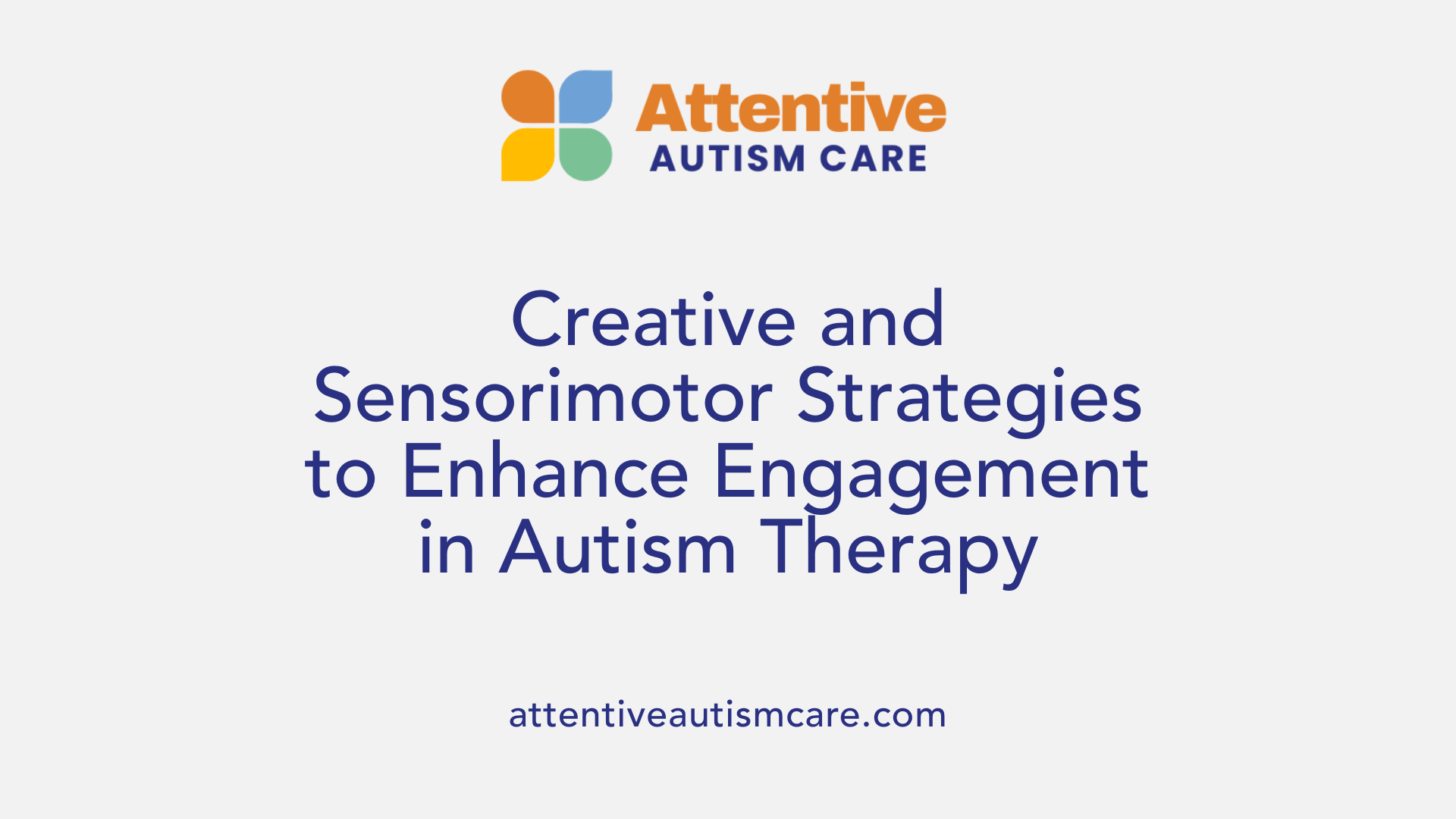
What Nonverbal Creative Methods Are Used in Group Therapy for Autistic Children?
Group therapy for autistic children often incorporates nonverbal creative techniques such as visual arts and movement therapy. These methods provide avenues for self-expression that do not rely on verbal communication, making them especially effective for minimally verbal children. Activities like drawing, painting, and dance encourage creative exploration and communication in a supportive group setting.
How Do These Methods Support Sensory-Motor Integration and Emotional Regulation?
Creative arts interventions aid sensory-motor integration by engaging children in activities that involve movement and tactile exploration. Movement therapy and drawing contribute to the development of body awareness and self-regulation by connecting rhythmic and sensory experiences to emotional states. This, in turn, helps children manage emotions and improves their ability to interact with their environment.
What Role Do Props, Structured Routines, and Improvisation Play in Therapy?
Therapists often utilize props and structured routines to create safe, predictable environments where children feel supported to explore social interactions. Improvisation allows for flexibility and playfulness within these structures, encouraging children to experiment with communication and social behaviors. The combination of these elements helps reduce anxiety and fosters a safe space for affective learning.
How Do These Techniques Facilitate Social Engagement and Communication Through Play?
Group-based creative activities promote social engagement by encouraging play-related interactions, mutual imitation, and shared emotional experiences. Rhythmic group activities using music and movement help synchronize children's actions and promote emotional attunement. Play in these settings supports the development of affective and communicative skills crucial for social reciprocity and mutual understanding.
These creative and sensorimotor strategies form foundational experiences, often referred to as "moments of meeting," which are essential for building social reciprocity among autistic children. By integrating these methods, group therapy enhances communication, emotional expression, and social connection in a developmentally supportive way.
Rhythmic and Musical Activities Enhancing Social Development in Group Settings
How do music and movement promote synchronization in group therapy for autism?
Rhythmic group activities incorporating music and movement play a crucial role in fostering synchronization among autistic participants. These activities help individuals align their bodily movements in time with others, creating a shared, coordinated experience that is often challenging for those with autism. The process supports the development of timing and motor skills essential for social interaction.
What role do emotional attunement and mutual imitation play?
Emotional attunement—the ability to tune into and respond to others' feelings—and mutual imitation are significantly enhanced through musical and movement exercises. These elements nurture empathy and social awareness by encouraging participants to observe, mirror, and respond to peers’ movements and emotional expressions. This dynamic interaction fosters a deeper connection and understanding within the group.
Why are 'moments of meeting' important in autism group therapy?
"Moments of meeting" refer to shared experiences of affect and playful interaction that occur spontaneously during group sessions. These moments serve as a foundational building block for social reciprocity and mutual understanding among autistic participants. They create a safe emotional space where individuals feel connected and validated, which supports therapeutic progress.
How do these activities support social reciprocity and mutual understanding?
By combining rhythmic exercises, music, and shared playful interactions, group therapy creates opportunities for social exchange that promote give-and-take communication—a core challenge in autism. These activities encourage participants to engage, respond, and build relationships, gradually enhancing their social reciprocity and mutual understanding.
Together, rhythmic and musical activities in group settings provide a multifaceted approach to addressing social development challenges in autistic individuals, blending sensory, emotional, and social experiences to foster meaningful connection and growth.
Co-Therapy Models and Therapeutic Environment in Group Autism Therapy
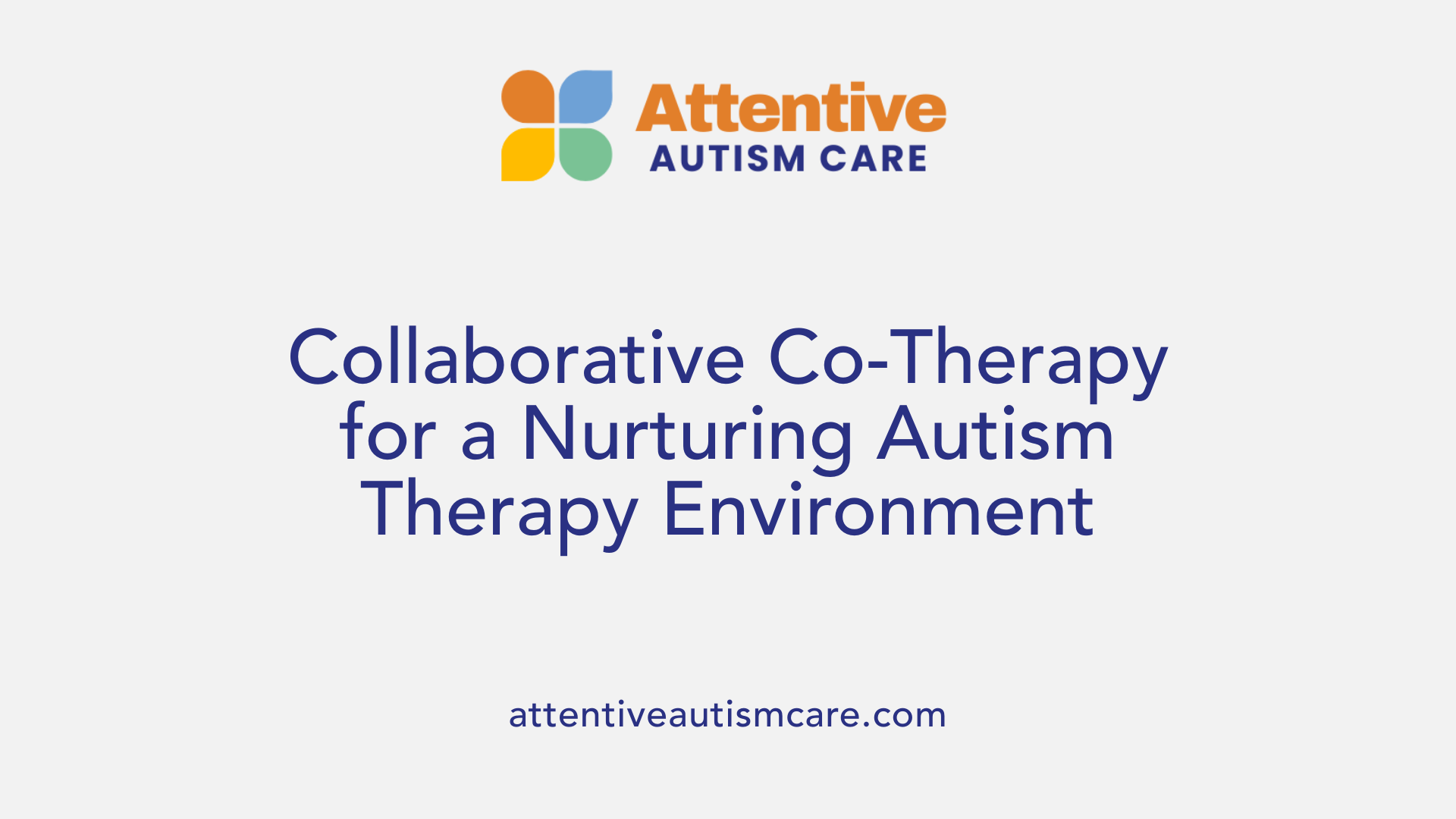
Modeling Communication Processes
Co-therapy models in group autism therapy involve two or more therapists working collaboratively during sessions. This dual presence allows therapists to explicitly model communication techniques, demonstrating effective ways to express needs, interpret social cues, and engage in interpersonal interactions. For autistic participants, observing these real-time examples helps bridge gaps in understanding social–emotional reciprocity and improves their ability to navigate conversations.
Providing Adaptive Strategies
Co-therapists tailor their approach by introducing adaptive strategies that accommodate individual differences in communication styles and sensory processing. This may include using clear visual aids, structured routines, or concrete examples that resonate with the group's unique needs. These adaptations create a flexible therapeutic environment, empowering participants to manage challenges related to social interaction and emotional regulation more effectively.
Creating Supportive Therapeutic Environments
The presence of multiple therapists helps foster a safe and predictable group setting. The therapists collaboratively establish norms that encourage respectful interaction and emotional safety. Such an environment supports autistic individuals in experimenting with new social behaviors without fear of judgment or failure, which is essential for building self-confidence and reducing anxiety.
Facilitating Relational Growth
By combining their skills and perspectives, co-therapists cultivate a nurturing atmosphere that promotes relational growth. They support participants in forming meaningful connections within the group and developing empathy and mutual understanding. This relational foundation is crucial for social development, as it provides opportunities for shared experiences and 'moments of meeting' that build social reciprocity and trust.
Group Therapy’s Role in Supporting Transition to Workforce and Education for Adolescents and Adults
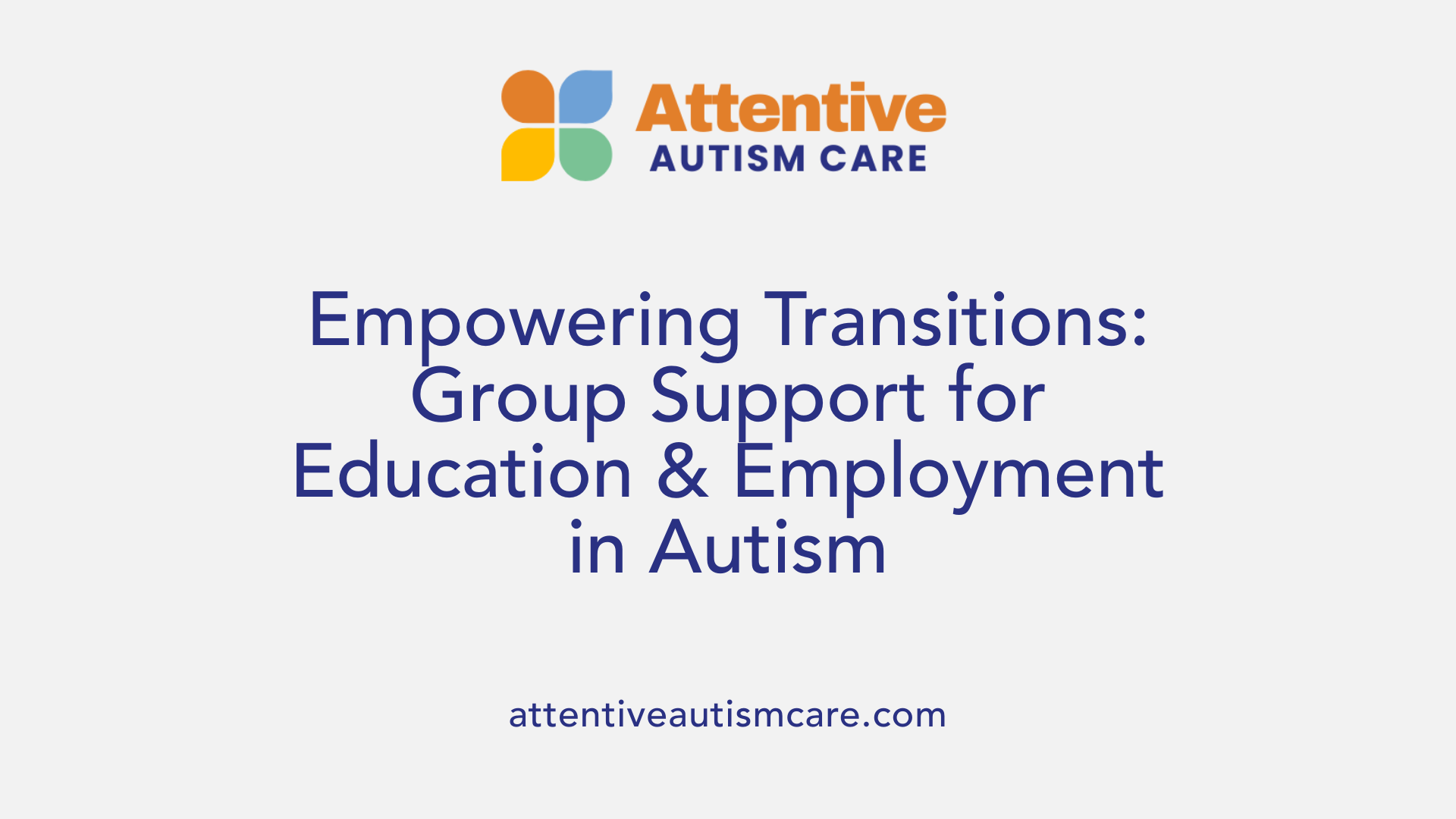
How Does Group Therapy Improve Communication and Social Interaction?
Group-based treatments for individuals with ASD are proven to enhance communication skills and social interaction, which are critical capabilities for navigating educational and workplace environments. These therapies often incorporate structured social skills training and behavioral approaches like Applied Behavior Analysis (ABA), fostering better emotional regulation and interpersonal competence.
How Does Group Therapy Facilitate Post-High School Education Enrollment?
By improving social competence and communication, group therapy equips adolescents with ASD to better manage the social demands of post-secondary education. The development of self-advocacy skills and peer interaction in a supportive group setting builds confidence, encouraging enrollment and sustained participation in educational programs.
In What Ways Does Group Therapy Support Workforce Entry?
Group therapies provide a platform for practicing social scenarios relevant to employment, such as role-playing interview skills and workplace communication. This preparation enhances individuals' readiness for job interviews and their ability to engage effectively with colleagues, thus facilitating smoother workforce entry.
What Are the Long-term Functional Outcomes of Group Therapy?
Sustained improvements in communication and social functioning from group therapy contribute to greater independence and community participation among adolescents and adults with ASD. This leads to better vocational and educational outcomes, supporting their long-term integration and quality of life.
These benefits, combined with cost-effectiveness and proven clinical efficacy, underscore the importance of insurance coverage and wider access to group-based services for ASD individuals transitioning to adulthood.
Economic Benefits and Insurance Considerations for Group-Based Autism Treatments
How do group-based treatments for ASD contribute to cost savings?
Group-based treatments for autism spectrum disorder (ASD) have demonstrated notable cost savings to both Medicaid and private insurance providers. By delivering therapies such as cognitive behavioral therapy (CBT) and social skills interventions in group formats, the per-person cost of treatment decreases, making it a more efficient use of healthcare resources.
Why should insurance coverage be based on clinical need rather than payer decisions?
Currently, many insurance providers determine eligibility for ASD treatments based on their internal policies rather than the clinical needs of the individual. This approach limits access to evidence-based group therapies that can improve social interaction, communication, and quality of life. Prioritizing coverage based on clinical need ensures that individuals receive necessary and effective interventions.
What challenges do insurance eligibility criteria pose?
Insurance eligibility criteria often exclude group-based therapies due to perceptions about their effectiveness or cost. Such restrictions can delay or prevent access to beneficial treatments. Additionally, disparities in coverage based on payer decisions rather than medical assessments lead to inconsistent support across different providers and regions.
How can advocacy support broader access to group therapy?
Advocacy efforts focus on educating insurance companies about the proven benefits and cost-effectiveness of group-based treatments for ASD. Encouraging policy changes toward coverage that reflects clinical evidence can increase access. Stronger coverage supports improved outcomes, including better social integration and post-high school success for adolescents and adults with ASD.
Addressing Anxiety and Depression Through Group Psychotherapy in Autism
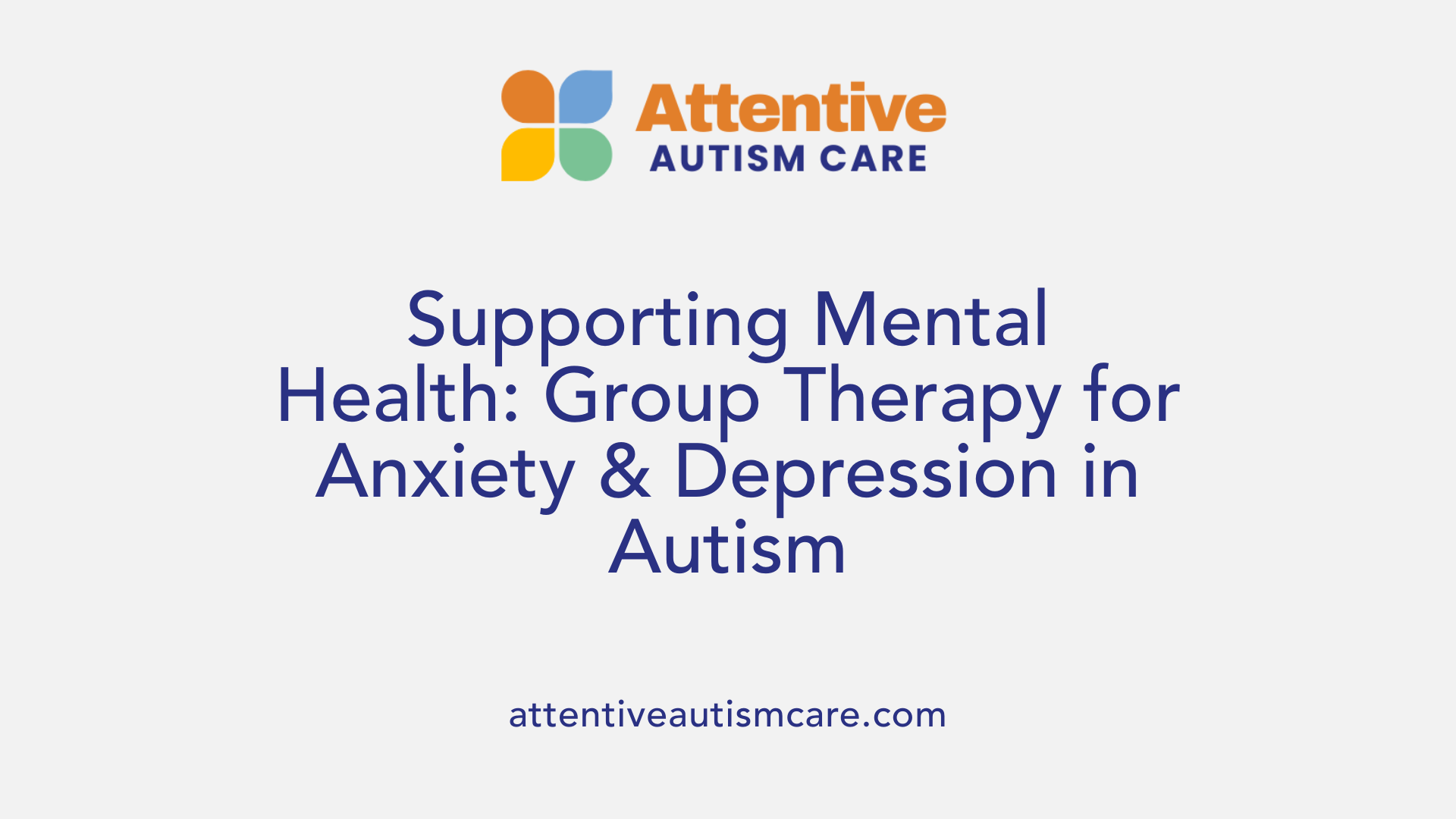
What is the evidence for anxiety and depression improvements through group psychotherapy?
The current evidence on the effectiveness of group psychotherapy for anxiety and depression in adults with autism spectrum disorder (ASD) is uncertain. Recent systematic reviews reveal mixed and inconsistent findings regarding changes in depressive symptoms and anxiety levels following group psychotherapy interventions. This uncertainty highlights the complexity of addressing mental health concerns in this population.
How consistent are the study findings on group psychotherapy outcomes?
Research involving a total of 261 adults with ASD, drawn from five studies including randomized controlled trials and non-RCTs, has shown varied results. Some studies found slight improvements, while others reported no significant differences or inconsistent outcomes for anxiety and depression symptoms. These inconsistencies are partly due to differences in study design, intervention types, and outcome measurements.
How does group psychotherapy compare to recreational activities in this context?
One randomized controlled trial compared group psychotherapy directly with recreational activities and found no significant differences between the two in terms of improving anxiety or depression symptoms. Both interventions were similarly effective in enhancing overall quality of life, but neither produced significant changes specifically in psychiatric symptoms.
Why is further research needed?
The heterogeneity of studies and lack of consistent positive findings emphasize a need for further rigorous research. Future investigations should aim to clarify which group psychotherapy approaches might be most beneficial for anxiety and depression in ASD, explore long-term outcomes, and compare group psychotherapy with other treatment modalities such as individual therapy or pharmacological interventions. Better understanding in this area will support more targeted and effective mental health strategies for autistic individuals.
Complementary and Alternative Therapies Supporting Mental Health in Autism
Art Therapy, Exercise, and Movement/Dance Therapy
Complementary therapies such as art therapy, exercise, and movement or dance movement therapy have shown benefits for mental health in autistic individuals. These approaches promote emotional regulation by providing sensory-motor integration and creative self-expression. Engaging in visual arts or rhythmic movement helps improve communication skills and social engagement by fostering shared affect and playful interactions.
Progressive Muscle Relaxation
Progressive muscle relaxation is another wellness practice supporting emotional regulation and anxiety reduction. This technique involves systematically tensing and relaxing muscle groups to decrease physical tension and promote relaxation, which can help autistic individuals manage stress and anxiety symptoms.
Support for Emotional Regulation and Anxiety
Together, these complementary therapies contribute to enhancing emotional regulation and alleviating symptoms of anxiety and depression. Participating in supportive activities often reduces social isolation and builds confidence in managing emotions.
Clinical Oversight with Alternative Treatments like Melatonin and Cannabis
While some autistic individuals use alternative treatments such as melatonin for sleep difficulties and cannabis for anxiety relief, these require careful monitoring by healthcare professionals. Clinical oversight is essential to ensure safety, appropriate dosage, and to avoid adverse effects, given the limited evidence and potential risks associated with these substances.
Support Networks and Community Participation for Autistic Individuals
How Do Support Networks Reduce Social Isolation?
Support networks provide vital opportunities for autistic individuals to connect with peers, share experiences, and build meaningful relationships. These social connections counteract feelings of isolation commonly reported in autism spectrum disorder (ASD). Structured group settings, such as group cognitive behavioral therapy (CBT) or recreational activities, promote regular social interactions that contribute to a greater sense of belonging.
In What Ways Does Community Participation Improve Quality of Life?
Engagement in community activities enhances quality of life by offering autistic individuals experiences that foster self-acceptance and empowerment. Participating in groups that focus on social skills or shared interests provides a safe environment for interpersonal growth, which translates into measurable improvements in quality of life scores, as observed in various studies.
What Are the Psychosocial Benefits of Community Engagement?
Community involvement supports emotional well-being through increased social competence and mutual support. It facilitates learning and practicing social skills in naturalistic settings, which can enhance daily functioning and reduce social anxiety. Moreover, community participation encourages the development of coping strategies, which are essential for managing ASD-related challenges.
How Does Community Participation Complement Formal Group Therapy?
While formal group therapies such as CBT target specific skills like anxiety reduction and social training, community participation reinforces these gains by providing ongoing, real-world opportunities for social practice and support. Both elements together create a holistic approach — therapy offers structure and professional guidance, whereas community involvement nurtures sustained social engagement and self-expression.
In summary, support networks and community participation are crucial components for improving the social and emotional well-being of autistic individuals. They reduce social isolation and enhance quality of life by offering spaces for connection, learning, and shared experiences that complement the benefits of formal therapeutic interventions.
Differentiating Social Knowledge and Social Performance Outcomes in Group Interventions
Higher improvements in reported social knowledge
Group-based social skills interventions (GSSIs) consistently show significant improvements in social knowledge among participants with autism spectrum disorder (ASD). Self-reports indicate large effect sizes (g=0.92), highlighting that individuals gain a better understanding of social skills, norms, and strategies through these programs. This reflects enhanced awareness and learning about social situations rather than direct behavioral changes.
Modest gains in enacted social behaviors
In contrast to self-perceived social knowledge, improvements in actual social performance—how participants behave and interact in natural settings—are more modest. Parent and observer reports show smaller effect sizes (g=0.47 and g=0.40 respectively), suggesting limited translation of learned skills into everyday social behavior. Teacher reports generally fail to demonstrate significant gains, possibly due to fewer observation opportunities or awareness constraints.
Implications for therapy goals and assessments
These differences emphasize the need for therapy goals to consider both social knowledge acquisition and practical social skill usage. Assessments solely focused on knowledge may overestimate real-life social competence. Therefore, comprehensive evaluation should incorporate multiple perspectives and settings. Understanding this distinction helps tailor interventions to not only teach social concepts but also support participants in applying them effectively in daily life, ultimately improving overall social integration and quality of life for adults and youth with ASD.
Adaptations and Individualization in Group Autism Therapy
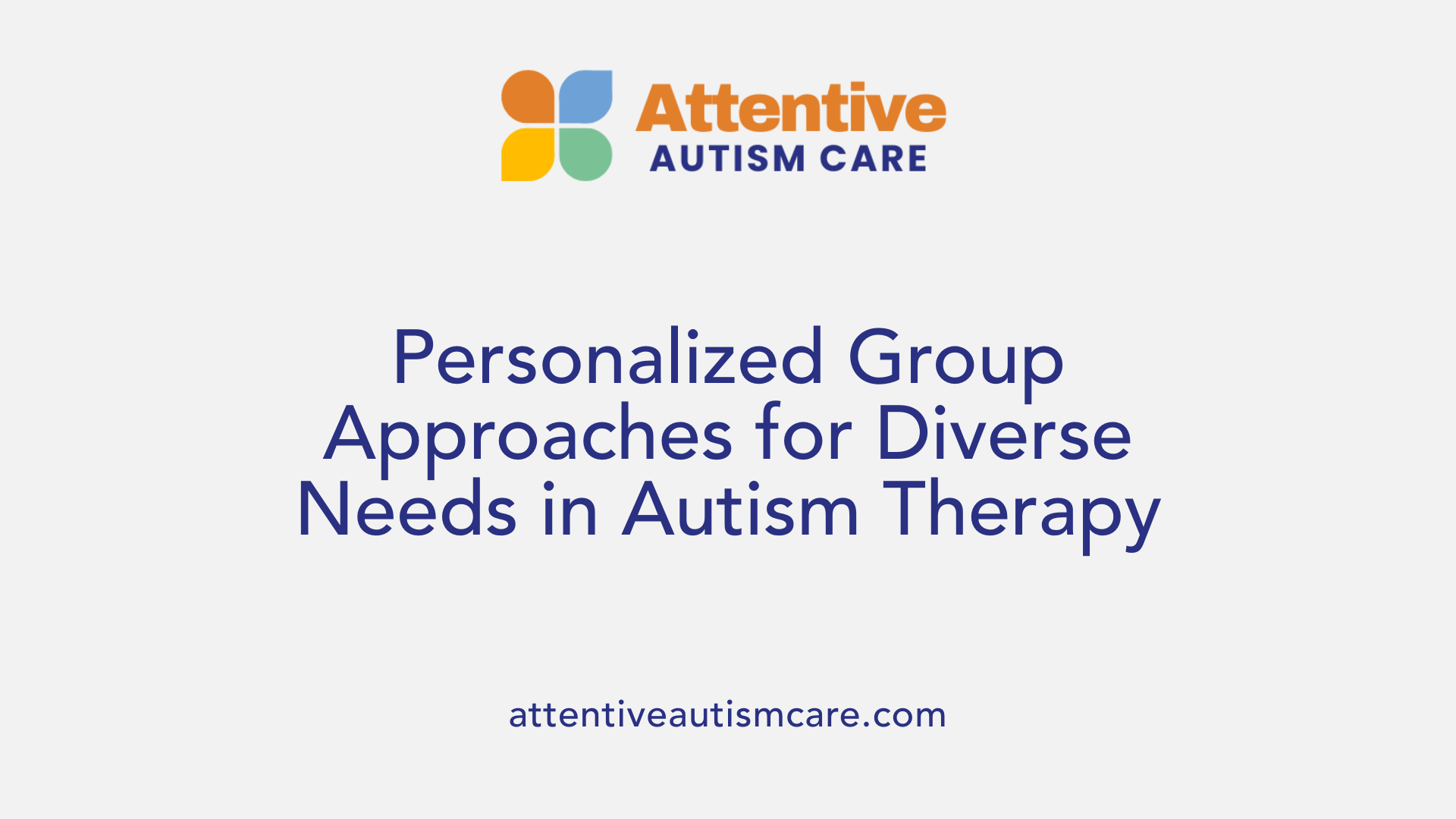
Tailoring Session Content to Varying Cognitive Abilities and Communication Styles
Group therapies for autism spectrum disorder (ASD) are carefully designed to address the diverse cognitive abilities and communication preferences of participants. Structured sessions incorporate activities suited for adults with normal intelligence but remain flexible to engage individuals with varying needs. This includes the use of nonverbal creative techniques such as visual arts and movement therapy for minimally verbal participants, promoting self-expression and communication through sensorimotor experiences like drawing and rhythmic group activities.
Use of Visual Aids and Concrete Examples in CBT
Cognitive Behavioral Therapy (CBT) for autistic individuals is adapted to enhance understanding by using concrete examples and visual aids. These modifications help participants grasp abstract concepts, facilitating learning and management of anxious or rigid thought patterns. Interoception therapy, a specific CBT approach, employs exposure techniques that connect bodily sensations to emotions, reinforcing self-regulation skills.
Emphasis on Participant Engagement and Motivation
Engagement is boosted through goal-setting, role-playing, and exposure exercises that are meaningful and relevant to daily challenges faced by individuals with ASD. Recreational activities and group-based social skills training further promote motivation by fostering social interaction in a supportive environment. High delivery fidelity and structured routines create predictable settings that encourage participation and reduce dropout rates, particularly noticeable in CBT groups.
| Adaptation Aspect | Techniques Employed | Therapeutic Benefits |
|---|---|---|
| Cognitive Ability Accommodation | Use of nonverbal creative arts; structured routines | Facilitates expression and understanding |
| Communication Style Inclusivity | Visual aids; concrete, real-life examples | Enhances comprehension and practical application |
| Motivation and Engagement | Goal-setting; role-play; group interaction | Increases participation; lowers dropout rates |
These tailored approaches ensure that group therapies are accessible, meaningful, and effective for autistic individuals, thereby improving therapeutic outcomes and quality of life.
Interoception Therapy and Exposure Methods within CBT for Autism
Teaching connection between bodily sensations and emotions
Interoception therapy, which is a specialized form of exposure therapy within cognitive behavioral therapy (CBT), helps autistic individuals develop awareness of their internal bodily sensations. This process teaches them to recognize how certain physical feelings relate to specific emotions, an important skill that can often be challenging for people with autism. By improving this connection, individuals gain better insight into their emotional states and triggers.
Promoting self-regulation
Through enhanced interoceptive awareness, individuals can actively engage in self-regulation strategies. This means recognizing early signs of anxiety, stress, or other emotional challenges by sensing bodily cues such as a racing heart or muscle tension. With this increased bodily-emotion awareness, individuals become better equipped to employ calming or adaptive techniques before situations escalate, supporting improved emotional management in daily life.
Role as part of behavioral therapy
Interoception therapy functions as a complementary component alongside broader behavioral therapies like CBT and Applied Behavior Analysis (ABA). By integrating interoceptive training within these approaches, therapists help build foundational skills for emotional and behavioral control. This holistic inclusion supports autistic individuals to not only understand their internal experiences but also adjust behavioral responses, creating a feedback loop that enhances overall therapeutic outcomes.
Combining Group Therapy with Pharmacological and Other Interventions
How Are SSRIs Used Alongside Behavioral Therapies in Autism?
Selective serotonin reuptake inhibitors (SSRIs) are often prescribed to autistic individuals to help manage anxiety symptoms. However, SSRIs are not used in isolation; they are typically combined with behavioral therapies such as cognitive behavioral therapy (CBT) or applied behavior analysis (ABA) to support comprehensive mental health management. This integrative method addresses both the biological and behavioral components of anxiety and other mental health conditions in autism.
Why Is Careful Monitoring of Medication Important?
Medications like SSRIs require careful clinical monitoring when administered to autistic people. This is essential to track the effectiveness of the medication, observe side effects, and adjust dosages appropriately to ensure safety. Since responses can vary, ongoing oversight by healthcare professionals is crucial to optimize the benefits and minimize risks.
What Are Integrative Approaches to Mental Health Support?
Effective mental health support for autistic individuals often blends group-based therapies with pharmacological treatments and complementary practices. Group therapies enhance social skills, self-expression, and emotional regulation, while medications address underlying neurochemical imbalances. Wellness practices, including art therapy, exercise, and relaxation techniques, further bolster emotional well-being. Support networks and community involvement also play a vital role, reducing social isolation and enhancing quality of life.
This holistic approach ensures that the complex and diverse needs of autistic individuals are met through personalized and multi-modal interventions.
The Multifaceted Benefits of Group Therapy for Autism
Group therapy for autistic individuals offers a spectrum of benefits ranging from improved quality of life and social skills to enhanced emotional regulation and community integration. Evidence supports the efficacy of structured group CBT for adults and social skills interventions for youth, while ABA provides a strong foundational science for behavior improvement. Creative, sensorimotor, and rhythmic activities further enrich therapeutic experiences, fostering communication and social reciprocity in safe, supportive environments. Despite some limitations and the need for broader access through insurance coverage, group therapies uniquely promote shared learning, self-acceptance, and functional gains that contribute positively across the lifespan of people with autism.
References
- Group cognitive behavioural therapy and ...
- Efficacy of group social skills interventions for youth with ...
- Effects of group psychotherapy compared to waiting list or ...
- Effectiveness of a modified group cognitive behavioral therapy ...
- Creative Group Therapy for Children With Autism
- Making the Case for Evidence-Based Group Treatment for ...
- Common mental health therapies and treatment for autistic ...
- Your Complete Guide to Becoming an ABA Therapist
- How to Become an ABA Therapist - School of Education



































































































